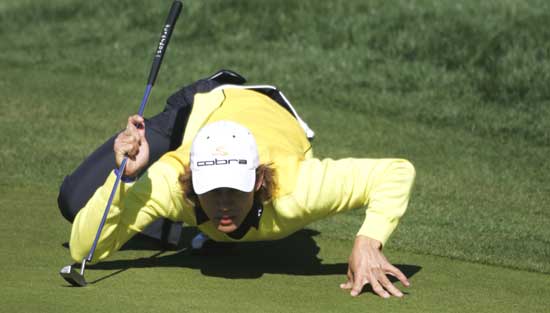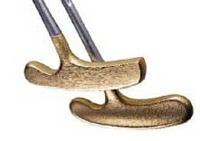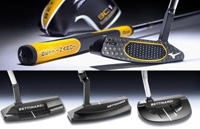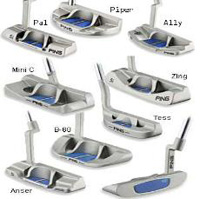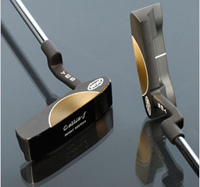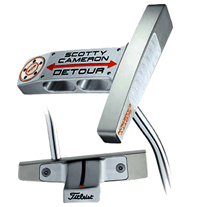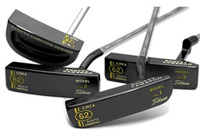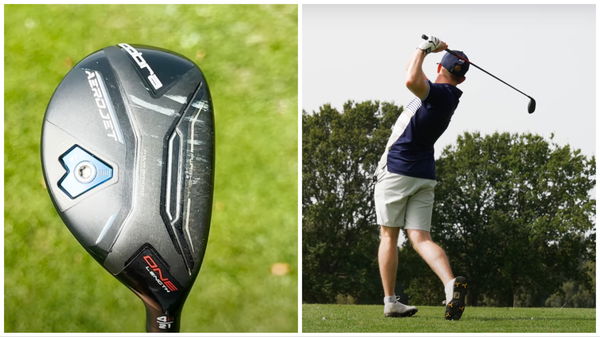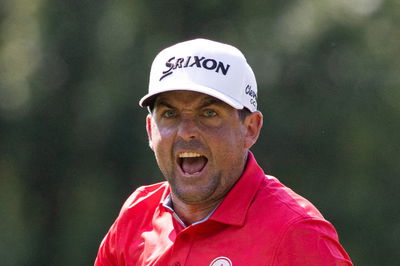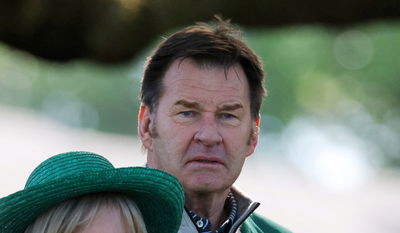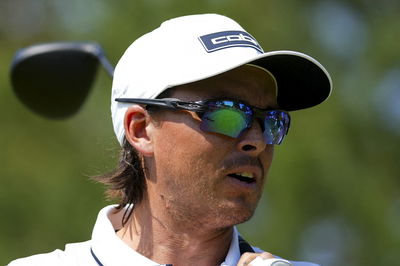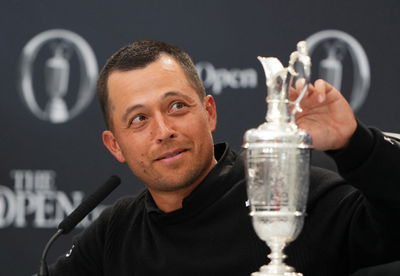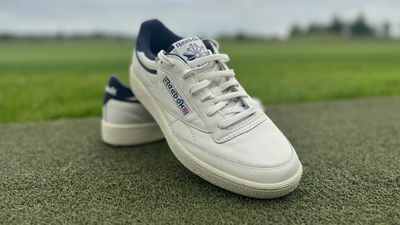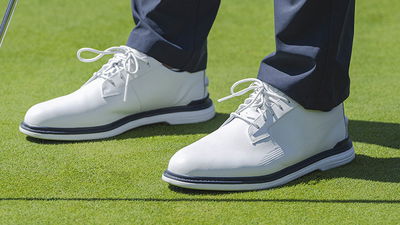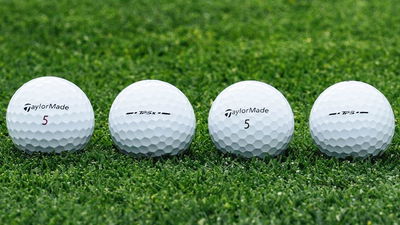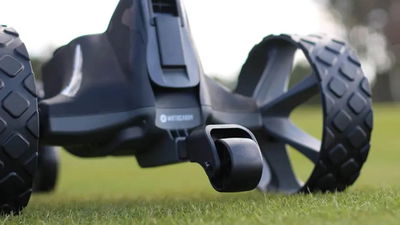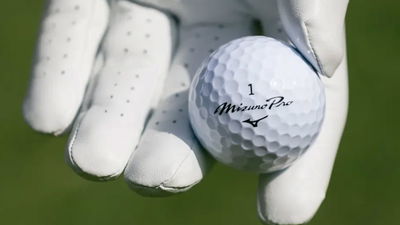2013 putter buyer's guide
In the market for a new putter? Our 2013 putter buyer's guide will give you all the putter tips you need to make the right choice

| |
The putter is one club choice where the classic designs of the past are as relevant today as they ever were. The double-sided Bullseye, the Mallet putters, the classic Wilson blade putter beloved by Arnold Palmer, and most famously, the Ping Anser-style putter, perform just as well now as ever they did in the hands of legends. There is a purity of strike, a feel and feedback with these classic putters that many golfers still prefer to the modern, often complicated-looking designs. However, these putters are demanding, and if your putting stroke can be a little suspect then there is an alternative in the 21st century, a larger headed MOI (Moment of Inertia) style of putter. The concept behind them is to move weight to the outer areas of the putter head, helping to resist an off-centre strike and making them more forgiving. A reasonable yardstick is that if you are a good and consistent ball-striker with a putter, then a classic Anser, blade or mallet are your best choice. But if you struggle to hit the ball consistently out of the sweet spot, then the bigger, heavier modern putters will suit you better. | |
The insert-face putter is a relatively new innovation and in the last couple of years have tended to be ridged or scored which, it's claimed, produces a better roll on the ball. Some golfers swear by inserts, some swear about them! A face insert - usually a different material to the body of the clubhead - can change the feel and sound of the strike and absorb some of its momentum. Personal choice will dictate which type of insert you prefer or whether indeed you'd rather have a putter with no insert like the classic clubs described earlier. Only trial and error will decide.
Many putters now offer the opportunity to adjust the weight of a putter by changing the plugs that screw into the putter head in the sole or back-cavity. | |
Interchangeable weights are a recent innovation, claiming to offer the option to suit your local conditions of slow, medium or fast greens. However some cynics might argue they're more of a marketing tool than an essential option but for those who travel a lot and like the opportunity to have a more lightweight head for faster greens in other continents may wish to consider this option
Putters are designed to be either face-balance or heel balanced. In general, and in my experience, golfers who have developed a pendulum putting technique - with firm wrists taking the putter head straight back and straight-through - perform better with a face-balanced putter. Identify them by holding the shaft on one finger and the face will point sky-ward. Those with a more wristy action or who putt with a 'inside-square-inside' swing technique (like opening and closing a gate) will benefit from a heel balanced putter. | |
Putters do have loft on the face. Intuitively you would think that to get a ball rolling, a negative or zero loft would deliver top spin. However it's not the case. A small amount of loft helps generate a little initial lift to the ball, allowing it to roll away from the slight depression in which it inevitably sits. Putter lofts generally vary between 2.5 and 4 degrees, fine-tuned by the manufacturer to suit their product. Lie angles as with any golf club can affect the direction the ball leaves the face, you could be missing putts due to the wrong lie angle to suit your clubhead position at address, which needs the sole to be flat to the putting surface. This is usual adjusted by the angle of the hosel - where the shaft meets the head. Make sure you get yours measured and fitted to suit the way you hold the putter in relation to the ground. A putter at address with the toe angled upward tends to deliver putts pulled to the left for a right-hander.
Again personal choice, depending how comfortable you feel at address. Some prefer the sweet spot of the putter as an extension of the shaft - a tendency in centre-shafted putters - others prefer the shaft fitted to the heel to offer a different angled view to the path of the putt. Depending on the golfer, both can perform equally well. | |
There is one hard and fast immutable rule - the putter must feel comfortable in your hands. Regardless of your height, if a putter feels too long or too short, then it is. Shorter length shafts (32 - 33-inches) tend to place your eye position over the ball and therefore looking down the line of the putt. But too short a length, make your stance crouching and uncomfortable. My best advice is to go for the shorter length putter that feels comfortable and more controllable and helps deliver a free swinging putting action.
If you've had the other clubs in your bag custom fitted or made to measure to your own stature and swing path and you feel it has helped your game - get fitted for your putter, too. Having a putter custom fitted can be a revelation, and a good fitter can fine tune your putter to fit your technique and give you so much more confidence. | |
The price of fitting is usually built in to the price of putter you buy from the fitter - otherwise they will charge for the service. There are website options for 'self fit' or you can choose a putter off the shelf that just feels great in your hands. But my recommendation is, for the sake of a modest fee, get yourself fitted by a professional.
Bearing in mind it's the club that delivers nearly half the shots you play, it provides the easiest path to better scoring. Don't be frugal. While paying more won't guarantee holing more putts, a premium putter will be well constructed of quality materials and designed to be better balanced. If it’s a club you enjoy handling and in which you take a pride, it will generate positive emotion and tend to produce results. Expect to pay between £60 and £150 for a good putter and for a top brand as used by the stars, as much as £200. You may find something under £40 that works for you, even second hand that fits your eye and your pocket. But generally you will know immediately you lay your hands on the putter for you and then you must decide whether or not you can afford to be without it.
It will silently appeal to you! Putting is about confidence. The putter you think will hole putts for you, WILL hole putts! There are so many good quality putters in the marketplace that it is impossible to offer a single recommendation. Be guided by what the best players use - not only on Tour but in your club. Take a peek in their bag and you will see a prevalence of Scotty Cameron by Titleist, Pings, Rossa by TaylorMade, Odyssey and the Yes!Golf C-Groove putters developed by Harold Swash. | |
Great golfers have good technique but they also use the best equipment. Finding a putter that instills confidence will have a greater positive impact on your golf game than any other club. It’s worth the search and once found, trust it, step up, and knock the ball in the hole!
And if you’ve got equipment to buy or sell second hand or even swap you can do that too, in our new and improved Tell us on the forum your experiences of choosing a putter. Did you buy it on impulse off the peg, get fitted or custom-design it yourself online? Were your buying decisions based on looks, feel, price or merely posing in front of your mates to be different. Maybe you picked up a real bargain or just got lucky. We want to hear your experiences. |
The Rules of Golf allow golfers to carry up to 14 clubs in on their golf bag, but most use just one club - the putter - to play nearly half the shots in a round of golf. It's probably the most important golf club that we buy so here's some tips on what to know when considering your next purchase!
5 golf putters buying tips
1 - Mallet vs blade - choose whether you need an oversized mallet or classic blade
2 - Insert vs milled - do you want the soft feeling of an insert?
3 - movable weights - would the ability to change your putter weight at home suit your game?
4. Putter grip - make sure you get the right size grip and one you feel comfotable with
5. Putter balance - Will a face or heel-balanced putter be best for your game?
Mallet vs blade
The putter is one club choice where the classic designs of the past are as relevant today as they ever were. The double-sided Bullseye, the Mallet putters, the classic Wilson blade putter beloved by Arnold Palmer, and most famously, the Ping Anser-style putter, perform just as well now as ever they did in the hands of legends.
There is a purity of strike, a feel and feedback with these classic putters that many golfers still prefer to the modern, often complicated-looking designs. However, these putters are demanding, and if your putting stroke can be a little suspect then there is an alternative in the 21st century, a larger headed MOI (Moment of Inertia) style of putter.
The concept behind them is to move weight to the outer areas of the putter head, helping to resist an off-centre strike and making them more forgiving. A reasonable yardstick is that if you are a good and consistent ball-striker with a putter, then a classic Anser, blade or mallet are your best choice. But if you struggle to hit the ball consistently out of the sweet spot, then the bigger, heavier modern putters will suit you better.
The mallet or blade putter is always a tough question to ask. If you struggle with balancing the putter head during your stroke then you may be better suited to a mallet but if you want more control over your putter then you may want to go for a blade.
We caught up with PGA Professional Grant Guerin and asked him to give his thoughts on the mallet v blade debate and he told us that everyone should buy a mallet.
Insert vs milled
Modern putters tend to have given special treatment given to their faces in the form of inserts and many companies have their own patented inserts such as Odyssey. On the other hand some putters have milled faces, such as the Cleveland Golf Classic Collection HB 1, which do not incorporate an insert and you need to find what insert is better for you through testing.
The insert-face putter is a relatively new innovation and in the last couple of years have tended to be ridged or scored which, it's claimed, produces a better roll on the ball. Some golfers swear by inserts, some swear about them!
A face insert - usually a different material to the body of the clubhead - can change the feel and sound of the strike and absorb some of its momentum. Inserts give a soft feel but some say this negates feel. Personal choice will dictate which type of insert you prefer or whether indeed you'd rather have a putter with no insert like the classic clubs described earlier. Only trial and error will decide.
Moveable weights
Many putters now offer the opportunity to adjust the weight of a putter, such as the Nike Method Core MC02w, by changing the plugs that screw into the putter head in the sole or back-cavity.
Interchangeable weights are a recent innovation, claiming to offer the option to suit your local conditions of slow, medium or fast greens. However some cynics might argue they're more of a marketing tool than an essential option but for those who travel a lot and like the opportunity to have a more lightweight head for faster greens in other continents may wish to consider this option
Putter grip
Being comfotable over a putt is paramount and so is being able to keep steady through your stroke. Finding a grip that allows you to do these two things could save you heaps of strokes.
A whole range of grips are available now - skinny, fat, leather etc. - and again it's going to be a case of seeing what fits you.
Putter balance
Putters are designed to be either face-balance or heel balanced.
In general, and in my experience, golfers who have developed a pendulum putting technique - with firm wrists taking the putter head straight back and straight-through - perform better with a face-balanced putter. Identify them by holding the shaft on one finger and the face will point sky-ward.
Those with a more wristy action or who putt with a 'inside-square-inside' swing technique (like opening and closing a gate) will benefit from a heel balanced putter.
It's important to know what kind of stroke you have in order to buy the correctly weighted putter. You can find this our by going to a putter fitting.
What putters do the pros use?
Phil Mickelson - Odyssey Versa #9
Tiger Woods - Nike method 001
Luke Donald - Odyssey White Hot XG #7
Rickie Fowler - Odyssey Versa #7
Graeme McDowell - Odyssey White Hot #7
